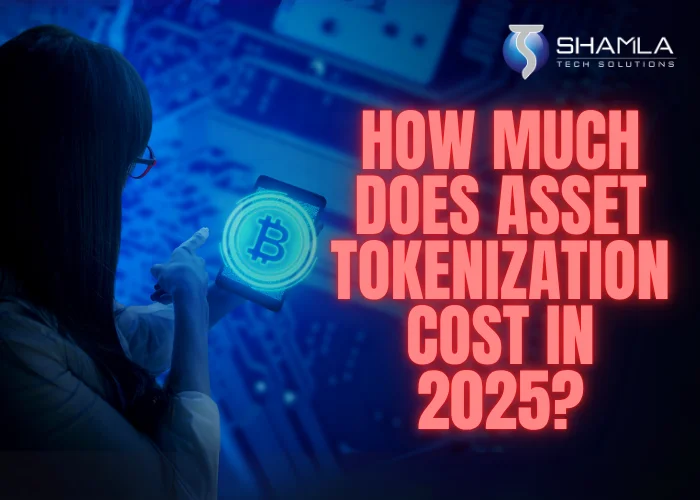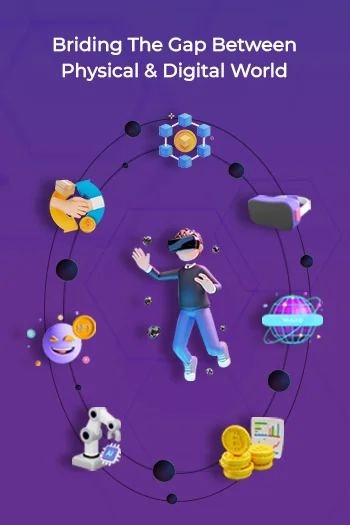Tokenization is reshaping finance in 2025, letting asset holders turn physical items into digital tokens on blockchains. Yet understanding asset tokenization cost is key for both investors and developers. Real world asset tokenization boosts liquidity, global transparency, and access, but fees for token creation, smart contract deployment, and ongoing maintenance vary by platform and complexity.
Elements such as regulatory checks, code security reviews, and high blockchain traffic can increase overall costs. Grasping these cost drivers helps asset owners plan budgets, choose suitable protocols, and avoid hidden charges. This insight is essential for anyone building or using tokenized assets in today’s rapidly changing digital markets worldwide.
Asset Tokenization in 2025
1. Cost Structure of Token Creation
2. Platform and Protocol Fees
- Gas or per‑transfer fee rate
- Node participation or subscription fees
- Token listing or registration charges
3. Legal and Compliance Steps
4. Smart Contract Setup
Smart contracts drive real estate tokenization. Code must define token supply, transfer rules, and voting rights when needed. Developers deploy contracts on testnets, run unit tests, then verify source code on blockchain explorers. Gas optimization techniques like code refactoring and loop minimization reduce per‑transaction costs. Final deployment should include:
- Security review
- Access control checks
- Backup and recovery plans
This approach ensures token logic runs correctly and stays secure in production.
5. Maintenance and Upgrades
Post‑launch upkeep is ongoing. Real world asset tokenization platforms need regular software updates, security patches, and smart contract re‑audits. In real estate tokenization, property changes , ownership transfers or valuation updates which must be in sync with token records. Monitoring network health and performance prevents downtime. You consider budgeting for:
- Patch deployment
- Periodic security scans
- Community support and governance tools
Allocating resources for these tasks prevents sudden failures and maintains investor trust.
Key Components That Define Asset Tokenization Costs in 2025
1. Token Standards Implementation
Implementing token standards like ERC‑3643 sets on‑chain rules for asset metadata, permissions, and transfers. Developers map asset fields into smart contracts and enforce role checks. This step impacts asset tokenization cost through contract size and gas use. Teams often leverage real world asset tokenization services that offer ready‑made modules for identity and permission management.
Integrating these modules ensures consistent behavior across RWA tokenization platforms and speeds deployment. For real estate tokenization, contracts include property deeds, valuation metrics, and title records. Clear standard adoption cuts custom code, trims deployment time, and avoids hidden fees effectively.
2. Regulatory Compliance Setup
Setting up regulatory workflows maps rules into automated processes. Teams must:
- Register token offerings and submit filings
- Manage KYC/AML checks through identity providers
- Track licensing renewals and reporting deadlines
Each activity adds to asset tokenization cost via legal counsel, regulator fees, and audit subscriptions. Partnering with real world asset tokenization services providers automates checks and document storage. In real estate tokenization, land registry validation and escrow processes demand strict compliance. Automated logs and reporting tools enforce transparency. Planning these flows ahead prevents sudden legal expenses and launch delays.
Integrating these modules ensures consistent behavior across RWA tokenization platforms and speeds deployment. For real estate tokenization, contracts include property deeds, valuation metrics, and title records. Clear standard adoption cuts custom code, trims deployment time, and avoids hidden fees effectively.
3. Custody and Access Control
Secure token custody uses key management, multi‑signature wallets, and hardware security modules. Each layer increases asset tokenization cost via infrastructure setup and periodic key rotation. When planning cost to create RWA tokenization platforms, factor in:
- Client portals for user key management
- Permissioned ledger nodes running consensus
- Access control lists defining role scopes
Role‑based access limits mint, burn, or transfer operations to authorized keys. Deployable modules like secure enclaves and policy engines simplify integration. Scheduled backups and disaster‑recovery drills ensure resilience. Choosing turnkey custody vs. build‑your‑own impacts timelines and budget.
4. Governance Logic and Audit Trails
- Detailed event logs and checkpoint records
- Multisig approval workflows
- Integration with off‑chain reporting dashboards
5. Platform Integration and APIs
Integrating external systems via APIs connects payment gateways, custodial services, and data feeds. This layer adds operational overhead but optimizes workflows. Developers need REST or GraphQL endpoints for token creation, transfer, and identity status checks. API rate limits, response times, and message queues impact throughput.
Designing efficient calls reduces unnecessary on‑chain operations and cuts infrastructure fees over time. Standard SDKs and webhook listeners speed up integration with exchanges or analytics tools. Testing these endpoints requires simulation tools and load tests. Well‑designed API bridges ensure scalable data exchange and reduce manual steps across token projects.
6. Maintenance and Operational Overhead
Ongoing platform upkeep includes node monitoring, software patches, and database tuning. Automated alerts track chain sync status and transaction failures. Teams allocate DevOps resources to update smart contract libraries and roll out hotfixes. Regular security reviews and penetration tests uncover vulnerabilities before exploitation.
In property token setups, syncing asset records and token metadata demands periodic reconciliation scripts. Predictable operational workflows and scheduled audits avoid emergency work and budget spikes. Planning for scale, teams factor in monitoring tool subscriptions, log storage, and backup windows. This structured upkeep controls long‑term costs and maintains reliable service levels.
How to Budget for Building Your Own RWA Tokenization Platform
1. Core Team Roles and Hiring
Building a custom token platform starts with the right team. Key roles include:
- Blockchain Engineer to write and test smart contracts
- Backend Developer to manage APIs, databases, and servers
- Security Specialist to run audits, set up key management, and harden infrastructure
Salaries and contractor rates drive the first slice of asset tokenization cost. In‑house hires add ongoing payroll, while freelancers may cost more per hour but avoid benefits overhead. Estimating these roles early lets you balance headcount and expertise without surprises when your project moves from prototype to production.
2. Tech Stack Choices
- Layer‑1 vs. Layer‑2 Networks for gas fees and throughput
- Smart Contract Languages (Solidity, Rust) and available frameworks
- Storage Solutions (IPFS, centralized DB) for metadata
3. Third‑Party Services
- KYC/AML Providers for identity checks and screening
- Data oracles used for real-time pricing and external data integration
- Audit Firms to verify smart contract code
4. Maintenance and Scaling Overhead
- Node Monitoring to ensure on‑chain availability
- Security Patches applied to libraries and OS
- Load Testing to handle growing transaction rates
5. Governance, Support, and Upgrades
- On‑chain Voting Modules for upgrade approvals
- Helpdesk Systems to handle user queries
- Versioned Contract Deployments for new features
Why Shamla Tech is the Best for Asset Tokenization (and Budget-Friendly Too)
1. End‑to‑End Platform Package
- Secure token minting
- Permission systems
- Audit logs
- Maintenance plans
2. Regulatory and Compliance Stack
- Automated identity checks
- Ongoing license tracking
- Audit‑ready reports
- License integration
3. Platform Architecture and APIs
- Token creation APIs
- Metadata storage links
- Event streaming for token transfers
- Rate‑limit controls and versioning support
4. Custody, Security, and Upgrades
- Daily key rotations
- Encrypted backups
- Automated recovery drills
- Odd‑hour support
5. Support, Training, and Partnerships
Our team provides hands‑on training for developers and operators. We offer workshops on smart contract writing, on‑chain governance, and custody tools. Shamla Tech’s real world asset tokenization services cover live demos and troubleshooting calls. You also get a dedicated account manager to guide API integration and performance tuning.
Partnership programs connect you with exchanges and custodians. These alliances ensure your RWA tokenization platforms launch smoothly. Post‑launch, our support team handles queries, bug fixes, and feature requests. This close collaboration cuts your learning curve for token workflows. Our real world asset tokenization services scale up with your needs too!
Conclusion
Tokenization project budgets depend on design, compliance, and upkeep. Mapping needs network choice, smart contract logic, and custody setup turns unknown fees into clear lines.
Shamla Tech leads real world asset tokenization with expert breakdowns of asset tokenization cost into stages: standard implementation, regulation workflows, security layers, and maintenance.
For RWA tokenization platforms or niche real estate tokenization tools, this clear plan makes spending transparent. Shamla Tech’s hands-on approach ensures precise forecasts and smooth launches.
Contact Shamla Tech to outline your Asset Tokenization budget!
Schedule a free strategy call with us today!
FAQs
1. What drives asset tokenization cost?
Asset tokenization cost depends on smart contract development, network fees, compliance integration, custody setup, security audits, and ongoing maintenance. Detailed cost breakdowns forecast accurate budgets, avoid unexpected expenses, eliminate surprises.
2. How is real estate tokenization different?
Real estate tokenization requires legal title mapping, property appraisal integration, escrow workflows, and registry validation. Property token projects need specialized compliance, clear on-chain metadata handling, and robust custody, increasing complexity.
3. How can real world asset tokenization services speed up projects?
Real world asset tokenization services supply prebuilt smart contract templates, compliance modules, KYC APIs, custody integration. Using modular components speeds deployment, lowers asset tokenization cost, avoids custom coding overhead.
4. Which factors affect the cost to create RWA tokenization platforms?
Cost to create RWA tokenization platforms depends on network selection, contract complexity, compliance workflows, custody solutions, API integration, testing, audit fees, and ongoing operations. Budgets come from modeling these drivers.
5. How do maintenance and scaling costs impact long‑term budgets?
Maintenance and scaling costs include node hosting, software updates, security patches, audit renewals, and database optimization. Real estate tokenization platforms face higher fees as transactions grow. Planning headroom avoids overruns.






